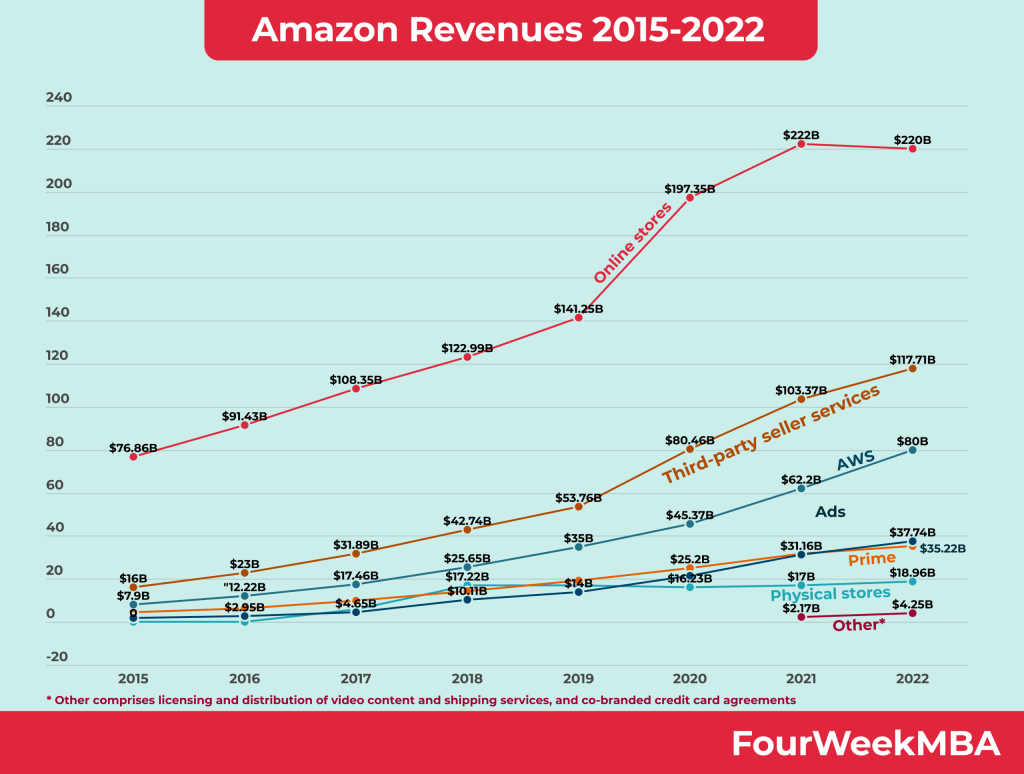Amazon AWS (cloud) is the most successful business segment within Amazon, and it generated over $90 billion in revenues in 2023, with over $24 billion in net profits compared to $80 billion in revenues in 2022 and almost $23 billion in operating profit. And over $62 billion in revenues in 2021 and $18.5 billion in net profits.
AWS was born as a side effect of a paradigm shift
Paradigm shifts can be compelling when a breakthrough moment comes.
And the dot-com bubble, a survive-or-die moment, defined Amazon for the next twenty-five years.
Also, from this paradigm shift, as an effect, of making difficult decisions, you might stumble upon gild mines!
In the case of Amazon, that was the transition, in the early 2000s, from e-commerce to platform business models.
Or in short, the mindset shifted, from selling its own products to becoming an enabler for other e-commerce businesses to sell on top of Amazon.

The giant of cloud
Today AWS is the major player in the cloud industry.

While AWS has helped Amazon stay relevant in the last ten years. Gong forward, the cloud business is for sure a critical element for the AI rage, which is happening as we speak.
In fact, within AWS, Amazon has built a high-performance computing platform, able to train deep neural nets.

For some context, AI models like Stable Difussion have been built on top of Amazon AWS supercomputer.

Amazon without AWS
Today AWS is also the major contributor to Amazon’s profitability.

Indeed, if you were to remove AWS from Amazon, you would get a company that loses more than ten billion a year.

Connected to Amazon Business Model

















